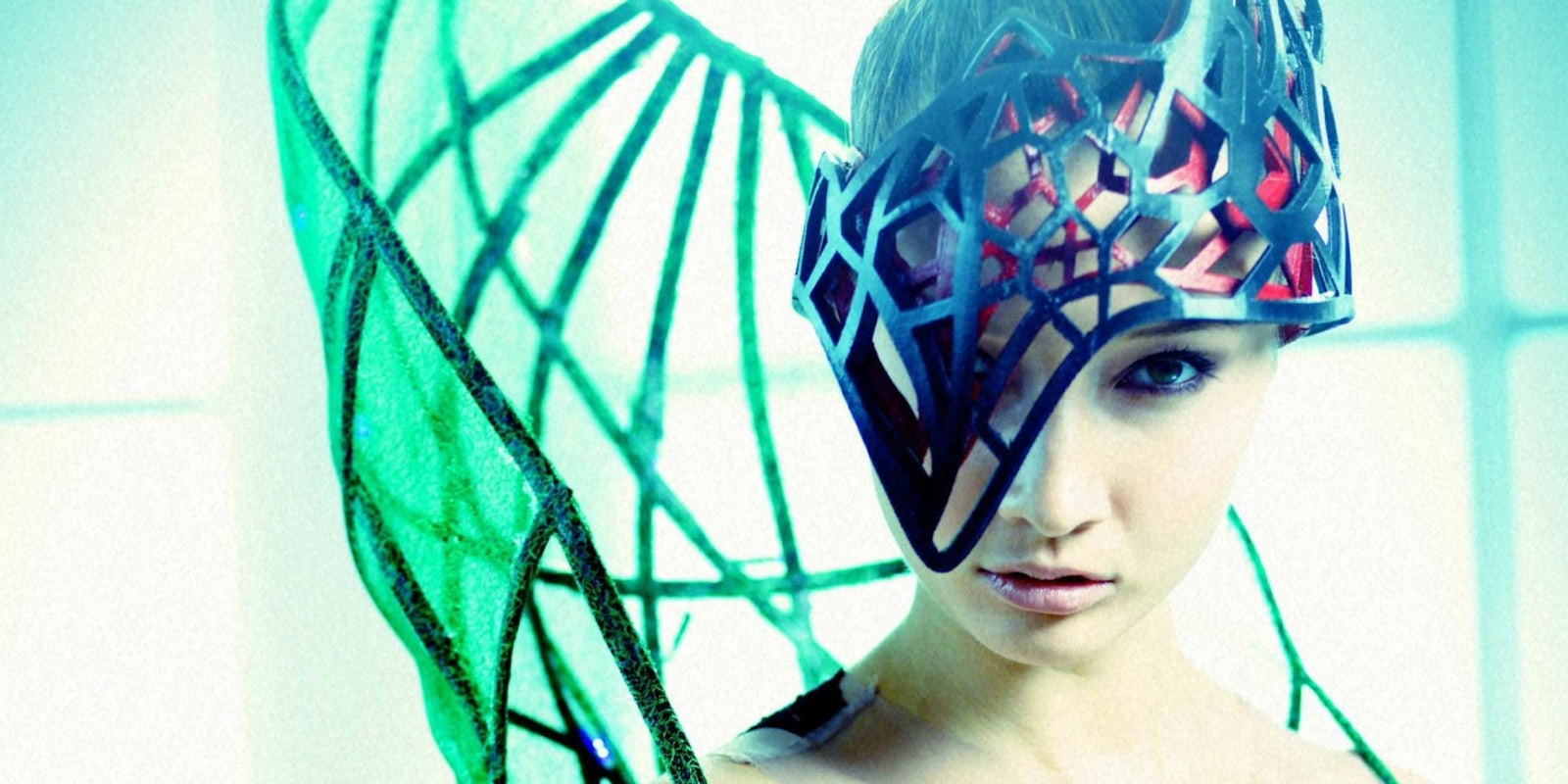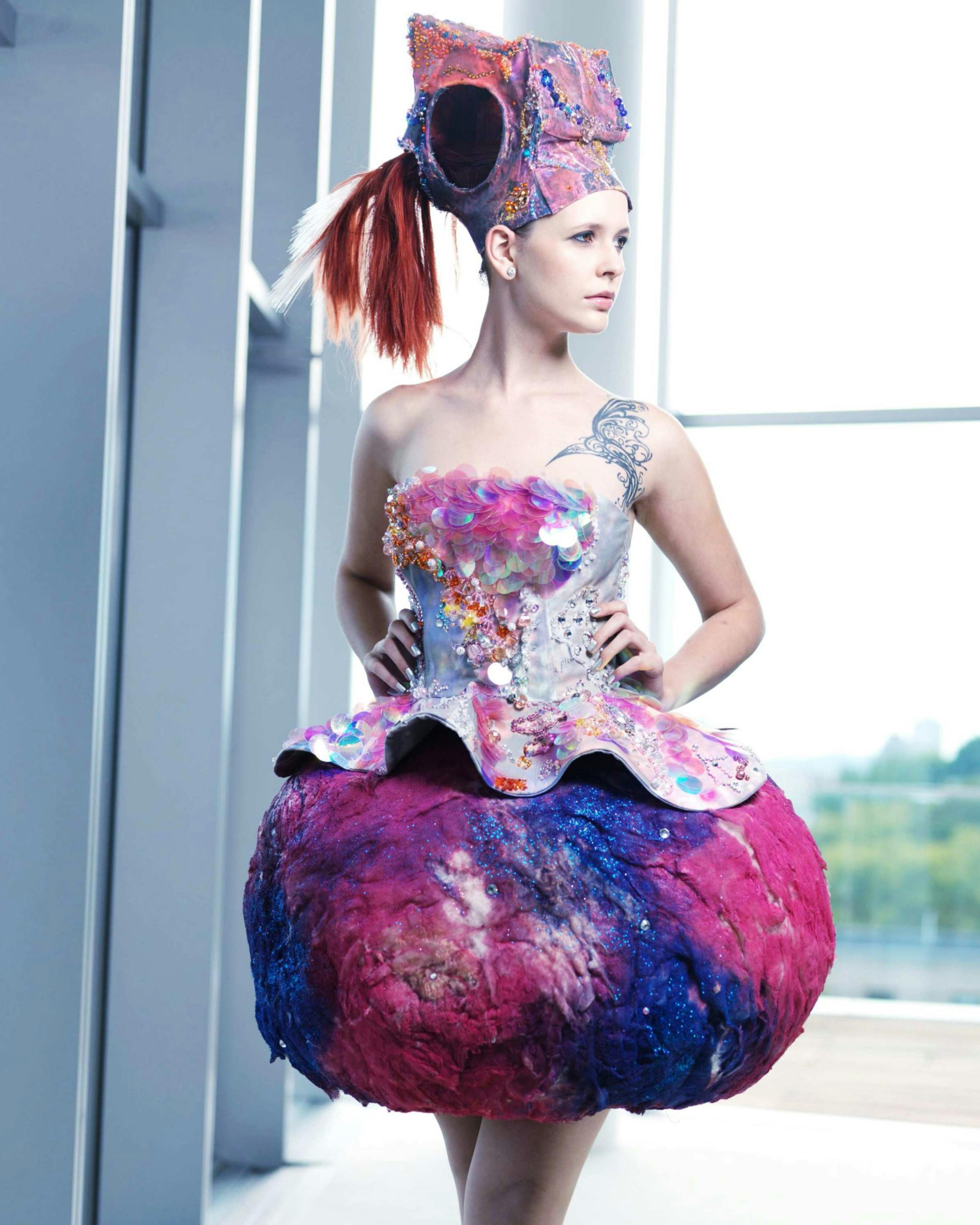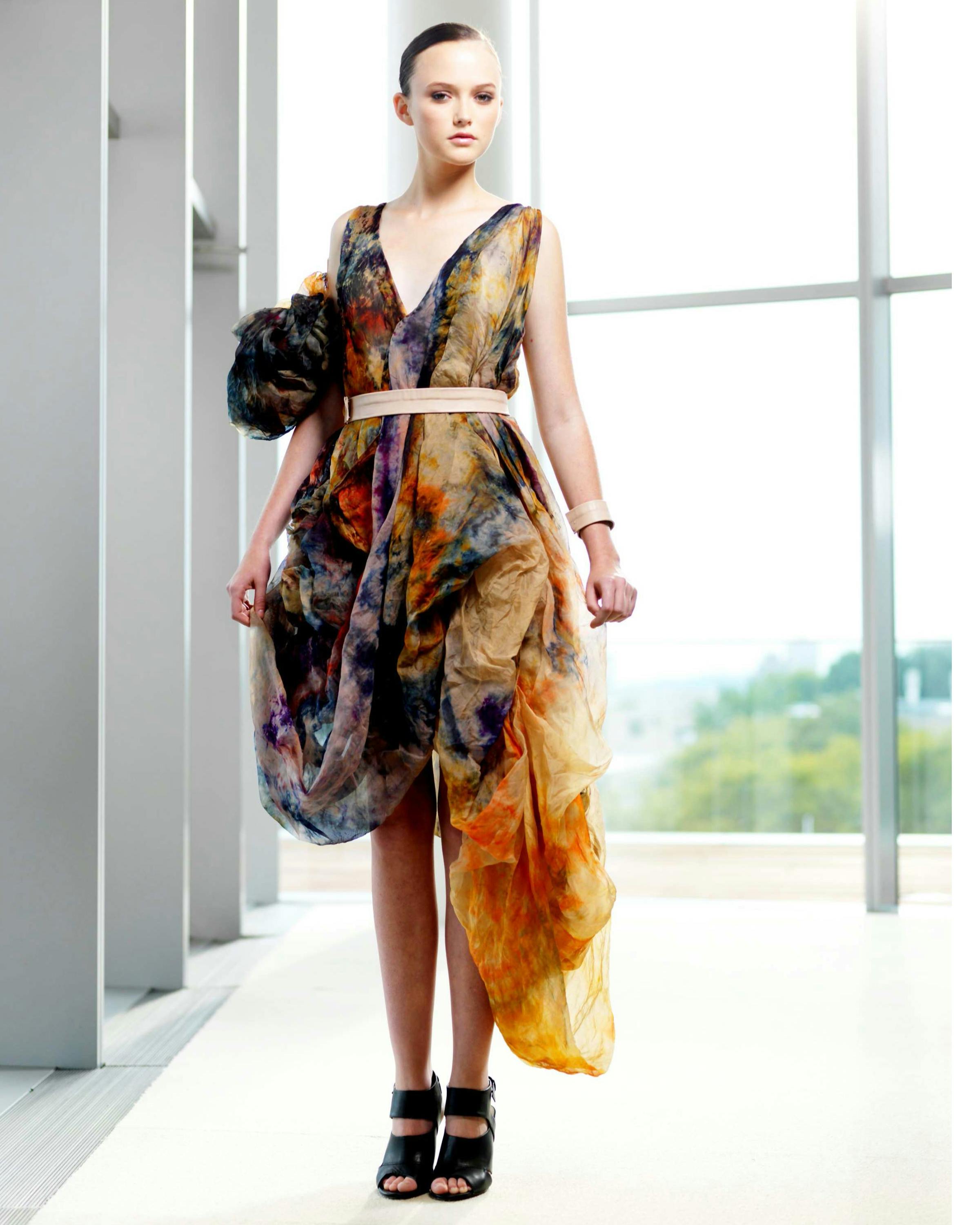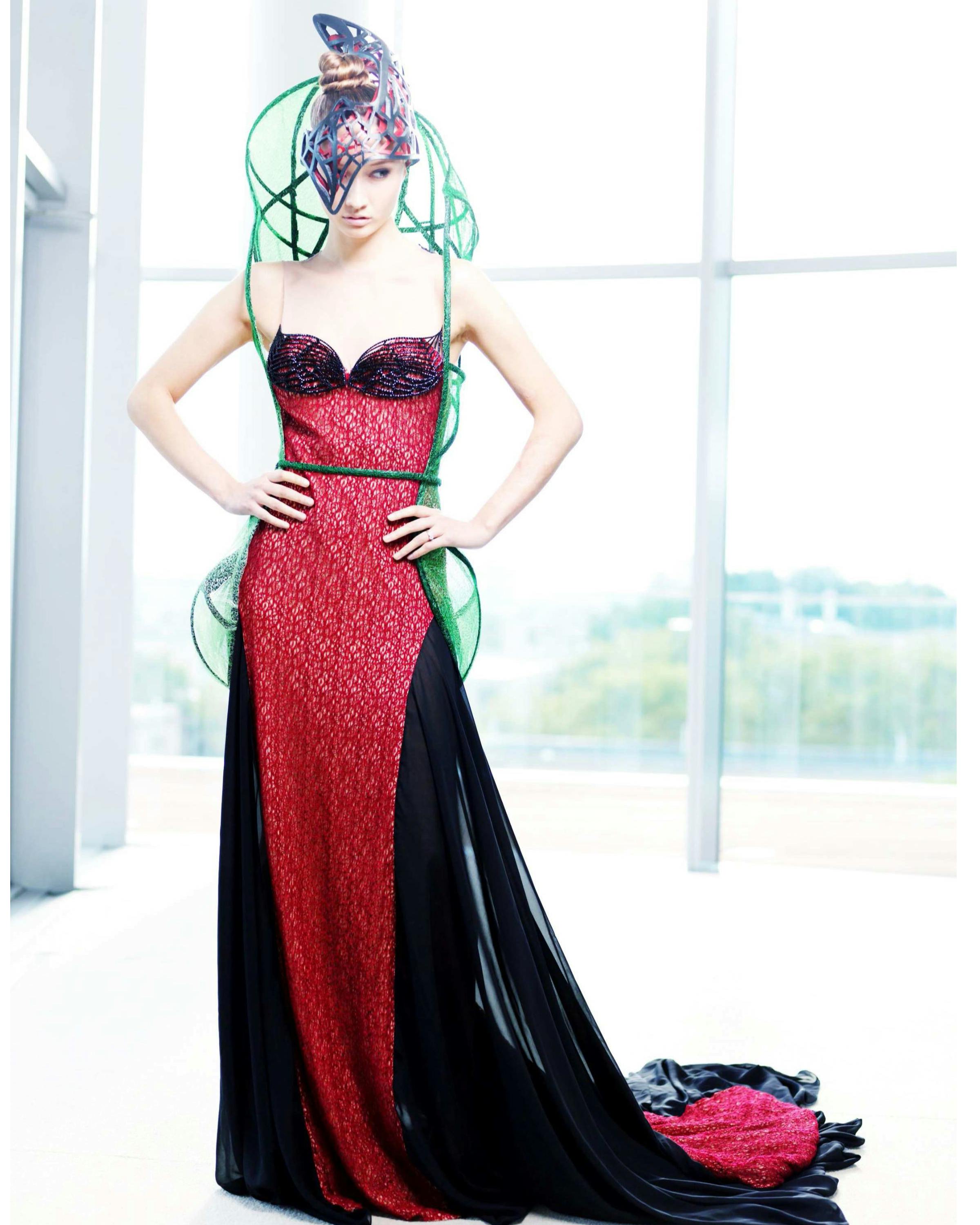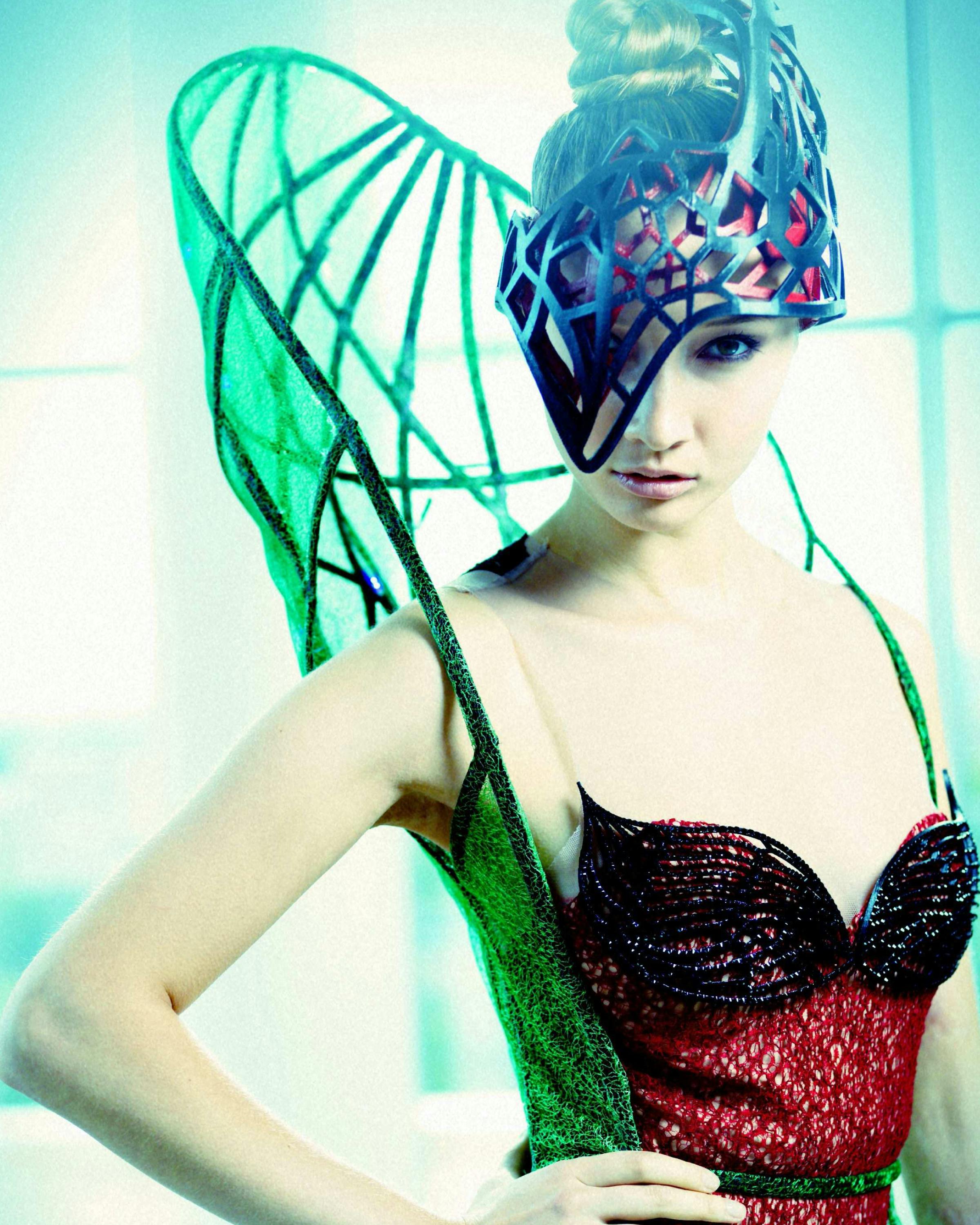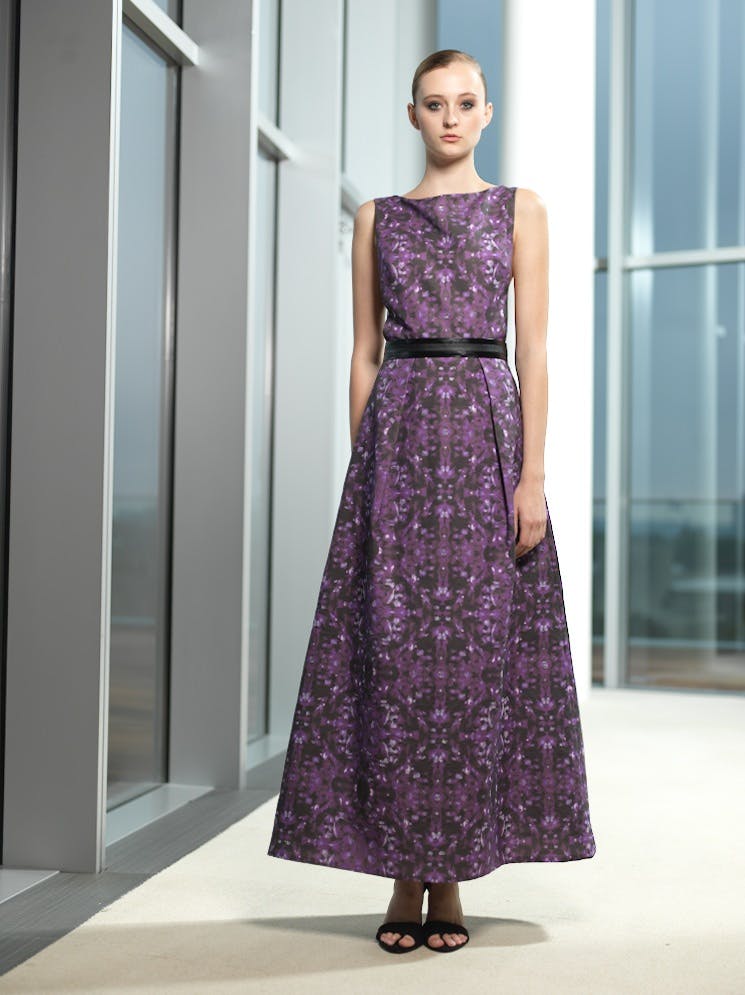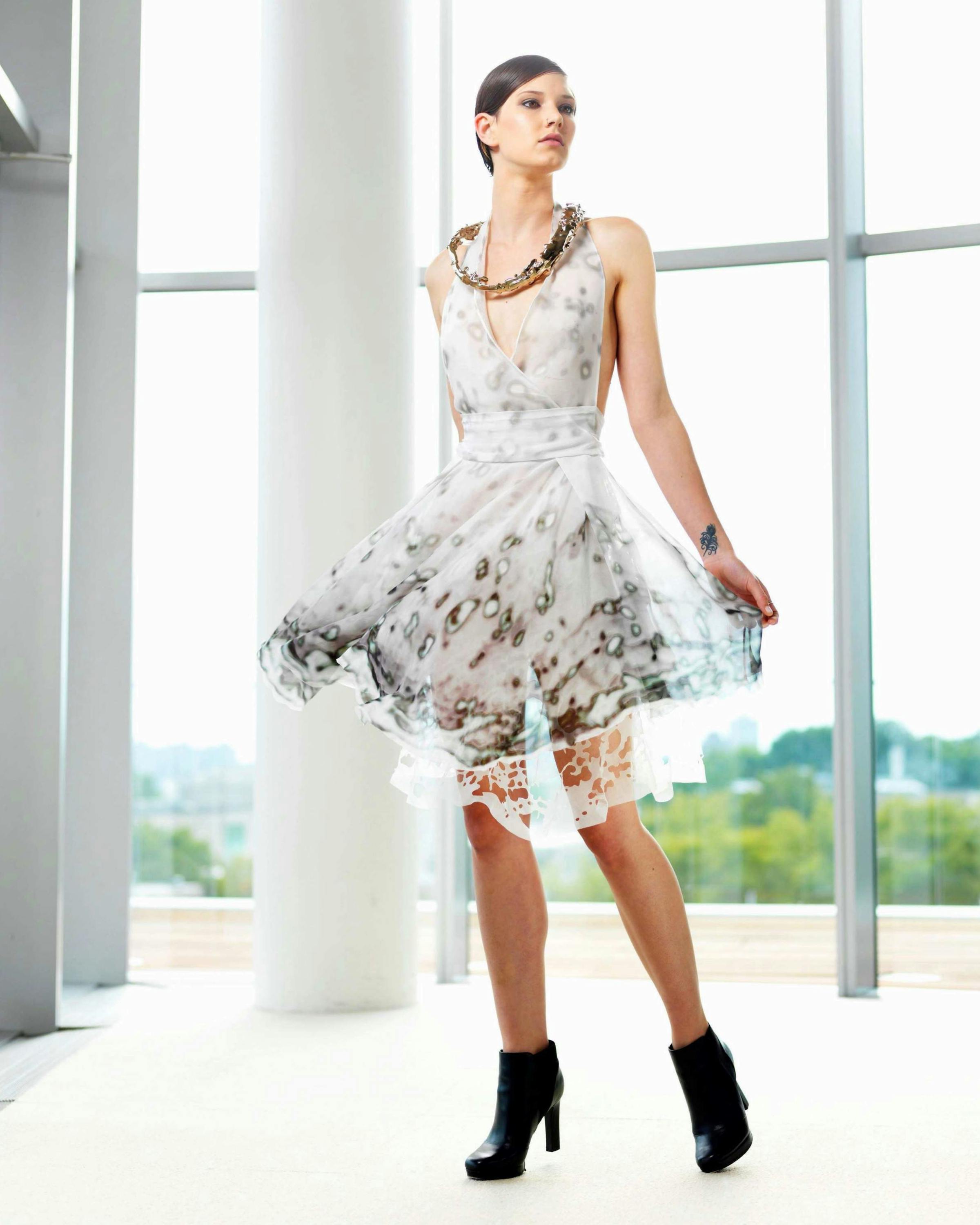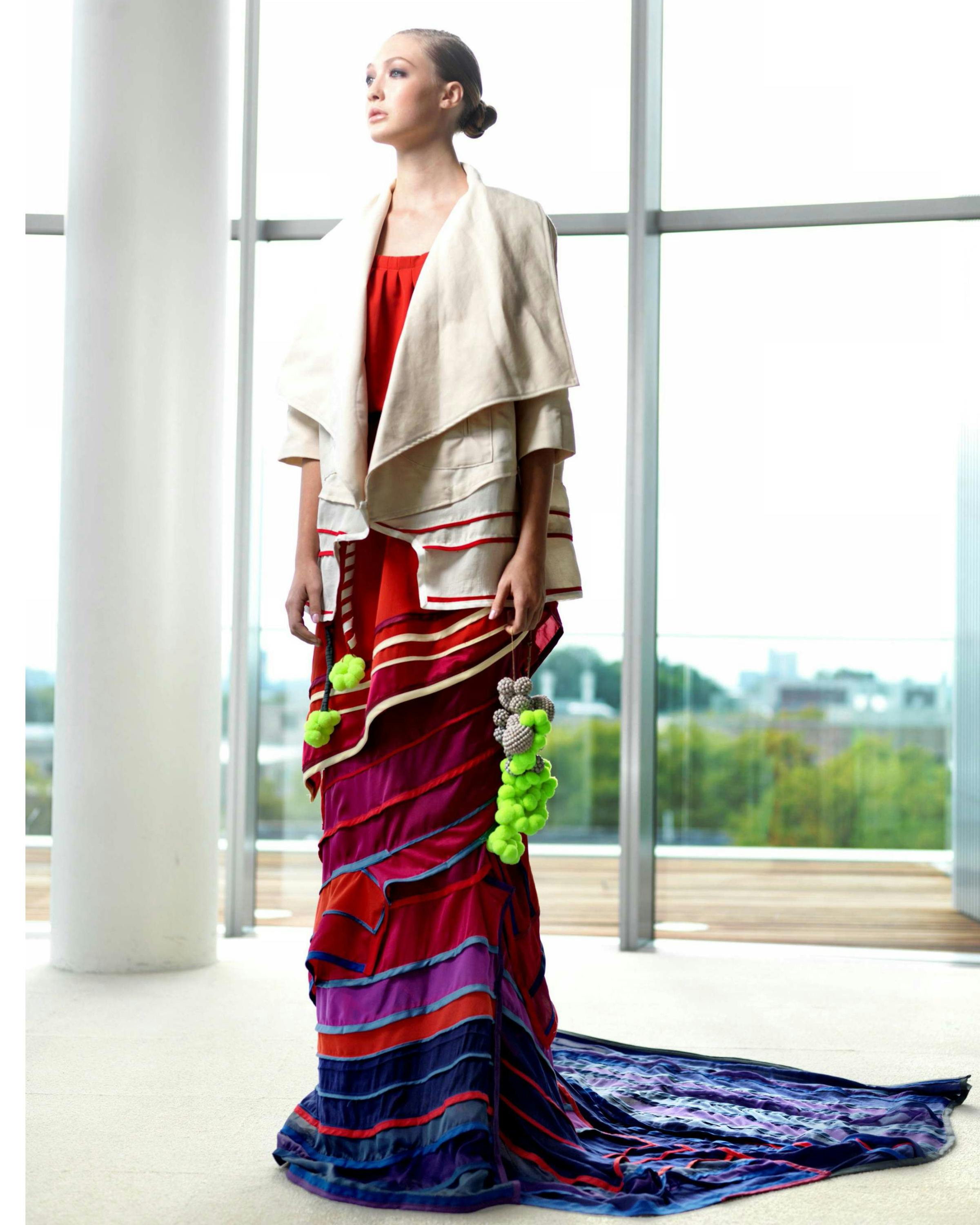What would it look like if malaria inspired a dress? Can you imagine how rock and mud layers might look walking a runway? Scientific research and fashion may seem close to impossible to combine, but one look at Descience will change your mind.
Descience describes itself as “a project in which the world of scientific discovery offers inspiration for the innovative minds of fashion designers.”
“We wanted to connect two worlds that have not been connected before,” neuroscientist Yuly Fuentes-Medel, executive director and founder of Descience, told the Daily Dot.
At the end of 2013, the Descience team put a call out to scientists inviting them to participate in the project. In turn, the scientists created an online science catalog containing ideas and images from their research. Fashion designers were invited to look through the catalog and pick research that interested them. The scientists then chose a designer to work with, bringing together researchers and fashion designers from around the world.
These teams worked together for months last year to create a runway look for a fashion show in September. The teams focused on a wide range of topics, including molecular biology and immunology. From a group of 15 finalists, judges chose a winning design, while fans of the project awarded a People’s Choice prize through an online vote.
The People’s Choice winner, Team OrphaCure, was composed of bioengineer Christopher Gibson and fashion designer Candice Wu. Both became involved with the project after seeing Descience post on Facebook.
“I’ve always found that the best ideas come when people who are experts in very different fields come together and merge ideas. We all think differently, and we can all learn from each other’s methods, processes, and concepts,” Gibson said. “I thought the opportunity to work with a well-known fashion designer sounded great because fashion, predictably, is a field I know almost nothing about as a scientist. I knew that working with a designer would illuminate a different way of doing things that I might somehow be able to utilize in my own work.”
Gibson’s idea for the project was a rare genetic disease called Cerebral Cavernous Malformation (CCM). Once he chose Wu as his designer, the pair met and began to collaborate. Gibson explained his research and provided Wu with images. For Wu, the process of combining the fashion and science began by first understanding the research then “getting inspiration from texture, colors, [and] the processes of the research.”
“I also pushed to make sure the relevance of rare diseases in general, not just CCM, were highlighted in the dress,” Gibson said. “In the end, the final product is true to the science—the textures and colors have direct inspiration from the images I work with in the lab on a daily basis—but Candice was also able to embody much of the dichotomy of fear and hope that is a part of life for so many patients with rare diseases and their families.”
The end result is a beautiful dress that seems to be conveying a message, even if you’re aware of the scientific inspiration behind it. The combination of science and fashion is described in detail on Descience’s website, illustrating how the dress mirrors the images and feelings Gibson is referencing.
While Gibson couldn’t be at the fashion show in person in September, he said he watched the live stream and “felt a profound sense of excitement that science was taking the stage.”
“The fashion was an entirely new way to tell a scientific story, and one which clearly resonated with a group of people who perhaps hadn’t paid as much attention to science before. I enjoyed seeing how each piece told a story of science and connected many people together,” Gibson told the Daily Dot.
The winning team received $1,000, which they donated to the Angioma Alliance. Gibson hopes the competition will raise awareness of the illness.
It won’t just be Gibson and Wu’s award-winning dress that gets your attention. All of the stunning Descience designs will make you want to learn more about what inspired them. It’s a great example of how science and fashion can come together for the benefit of both fields.
Fuentes-Medel believes designers and scientists each get two things out of collaborating together. The project allowed designers to experiment with the way they design clothes while letting science educate them about new ways to think about their medium.
“The scientists gain the ability to communicate their work in a completely different way, [in] a more tangible space. It’s really difficult to express ‘I am working in molecule DUXY’ rather [than] to point out to a tangible dress and say ‘look, it looks like this and we do think this way,’” she said. “It brings a tangible to the abstract world of science in many ways.”
The project also let scientists to see themselves as creative people, Fuentes-Medel said.
Fuentes-Medel said they are now in the process of evaluating what worked and what didn’t from the first runway show. As they do that, the team is continuing to look for ways to bring together these two worlds and inform others about it. They update their blog with posts exploring the topic and with news on events they attend, such as February’s Harvard Fashion Conference.
After Gibson’s experience with the project, he said he would definitely participate in it again.
“I think from the fashion perspective this project helps to build on a growing trend toward awareness in general. Fashion isn’t just about expressing yourself, but about expressing ideas now,” he said. “Descience embodies that, and I hope many more designers become involved in this sort of work. From a scientific perspective, this work helps us scientists— who sometimes do a poor job of telling the world why and how we do things—connect with a much wider audience.”
You can learn more about each of the teams involved in last year’s fashion show, see their creations, and keep up on news about future events on Descience’s website.
Photo by Jack Perno

